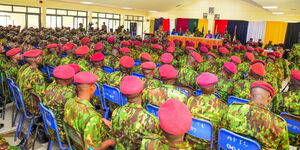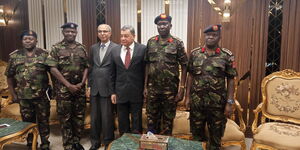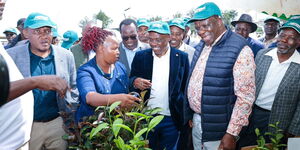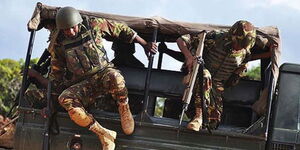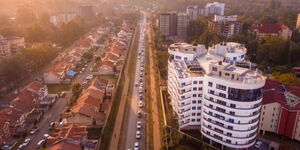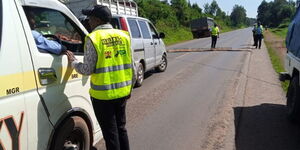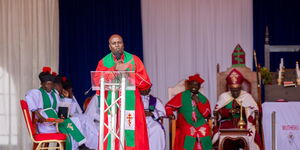The Kenya Wildlife Service (KWS) on Wednesday demonstrated how it undertakes the migration of wild animals from human settlements using science and technology.
Through a video shared from Naisoya region in Narok County, KWS showed how rangers skillfully help navigate elephants who had strayed into farmlands using a drone and a thermal camera.
KWS explained that their team with the help of rangers from a Non-Governmental Organisation (NGO) named Mara Elephant Project leveraged the technology to move the elephants who had strayed to farmlands back to Mau Forest.
“Under the starlit Kenyan skies, the KWS Narok team, together with rangers from Mara Elephant skillfully guided a majestic herd of elephants that had strayed from Mau Forest into community farmlands in Naisoya through the darkness."
“Using a drone equipped with a thermal camera, the team safely led the jumbos back to their sanctuary,” KWS stated.
A thermal camera converts infrared light to make objects that are warmer than their surroundings easier to see.
The image from the camera is more visible to the human eye so it can be used to detect any warm-blooded animal without disturbing them or altering their behaviour.
According to KWS, thermal imaging and the use of the drone enabled the rangers to guide the herd of elephants in the night without disrupting them or the human settlements.
“This not only ensures the safety of both humans and wildlife but also effectively mitigates human-wildlife conflict,” KWS noted.
Additionally, KWS celebrating the achievement noted that it was only possible through collaboration with the NGO in wildlife conservation efforts.
In a separate incident that occurred on January 23, KWS rescued a Grevy zebra infant foal in Lengardae, Samburu County.
The infant zebra was found suckling on its mother’s carcass after the mother passed away due to postpartum complications.
However, the KWS Northern Kenya Mobile Vet Unit acted swiftly to save the foal and was moved to the Reteti Animal Rescue Centre.
"This successful rescue not only saved the foal but also emphasized the significance of wildlife conservation and protection ensuring a legacy of thriving biodiversity for generations to come," KWS stated.

